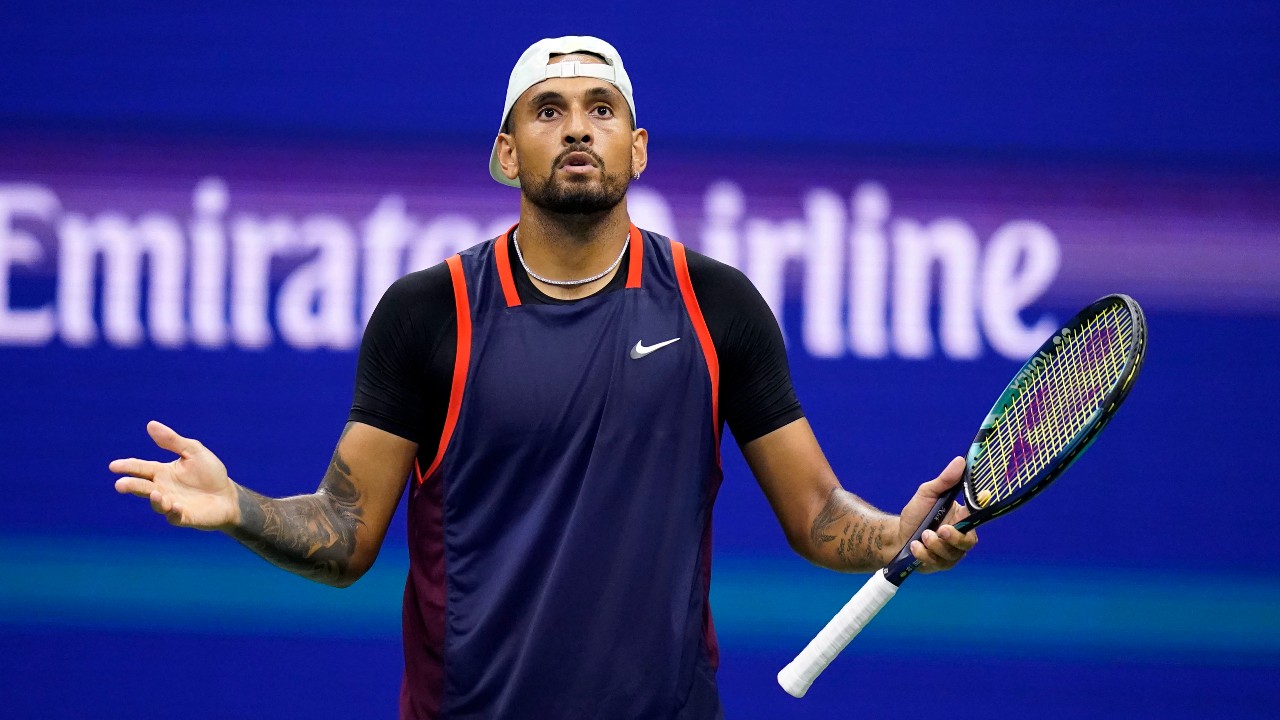Finishing out your career at the Olympics—at a place where they went ahead and built a statue for you before you even retired—is what the kids these days call a “baller move.” Sure, Michael Jordan won his last three championships at the United Center in Chicago while his likeness sat in front of the arena. But even that structure was unveiled, in 1994, when Jordan was still retired and playing baseball and not hinting at any kind of comeback. Roland-Garros, home of the French Open and the Olympic tennis tournament in Paris, just went ahead and bronzed Rafael Nadal—actually, he’s made of steel—in 2021, as he was still piling up French Open championships. In fact, in 2022 Nadal went ahead and won his 14th Roland-Garros title.
Nadal won’t add to his haul this year. In the most highly anticipated event on Monday at the Olympics, world No. 1 Novak Djokovic, winner of a men’s record 24 major championships, defeated Nadal—who holds 22 Grand Slam titles—in straight sets, 6-1, 6-4, in what is very likely the last match of their two-decade rivalry. (Djokovic now leads the head-to-head, 31-29.) While Nadal won’t commit to retiring, he’s made no secret that various injuries have impeded his desire to go on, and this could be his last year in the sport. So everyone at Court Philippe-Chatrier—and all the fans on the Roland-Garros grounds who lined up to take thumbs-up pictures and selfies at Nadal’s statue, which depicts the Spaniard in mid-swing—were well aware that they might be witnessing Nadal’s last individual match in Paris, on the clay court that defined his career.
Read More: Leon Marchand’s First Olympic Gold Will Only Fuel Michael Phelps Comparisons
“You want me to retire every day, guys,” Nadal told reporters afterward. He’s not done at these Olympics, or at Roland-Garros—Nadal and 2024 French Open and Wimbledon champ Carlos Alcaraz are playing doubles together and will team up in the second round on Tuesday. (This is Nadal’s fourth Olympics – he has a gold for singles in Beijing and a gold for doubles in Rio.) “I cannot live every single day with the feeling that it is going to be or not going to be my last match,” said Nadal. “I come here, I try my best, I play and when I decide to stop playing or when I decide to keep going, I will let you know.”
While his best wasn’t good enough against his nemesis Djokovic, this being Nadal, he refused to exit without a fight. Djokovic raced out to a 5-0 lead in the first set, and no one—perhaps not even Djokovic—wanted to see Nadal suffer the indignity of being bageled. Nadal finally held to make it 5-1, but Djokovic closed the set out soon after. In the second set, Djokovic went up 4-0, and the match felt on the verge of blowout status. Nadal losing 6-1, 6-0 at Roland-Garros, even to a player as accomplished as Djokovic, would be the equivalent of Willie Mays stumbling around in the outfield during the final years of his career, or Jordan wearing that Washington Wizards uniform. Tough to witness.
Nadal, however, held serve, and on his first break point of the match, Djokovic double-faulted. Nadal held again, and he tied the set at 4-4 on a pretty forehand passing shot. Roland-Garros exploded, in vintage fashion. Nadal was running, sliding, striking like his old self.
Read More: Kevin Durant’s Performance Against Serbia Is a Warning to the World
But Djokovic wouldn’t give in either. A beautiful backhand drop shot won him the next game. Djokovic’s serve was cooking in the final game; he closed out the match with little drama.
“I was not able to put him in difficult positions, I was not able to have enough quality shots, enough quality of movement,” said Nadal. “I must accept that I am not ready to play on this high level.”
After the match ended, Nadal allowed little time for fanfare. Djokovic blew kisses to the crowd and mimicked playing the violin on his racket, a gesture for his daughter Tara, 6, who is learning to play the instrument. It would have been nice, perhaps, for Djokovic to encourage the crowd to acknowledge his opponent, given the potential history, the potential Nadal goodbye in France. For his part, Nadal just packed his bags and walked off with a wave. There was no lap around the court or anything close to grandiose.
“Everything has a beginning, everything has an end,” Nadal said on Monday. “I’m going to miss the adrenaline of playing. But you know, guys, I can’t complain. I have been playing this sport for 20 years, fighting for the most important things. I achieved much more than I ever dreamed. If that’s the last match here, or when it’s going to be my last match here, I’m going to accept [it] in peace. I did my best. I can’t complain anymore.”
Some two hours after Djokovic’s win, dozens of people from around the world continued to line up at the Nadal statue to pay homage. “It’s always going to be sad,” says Alex Alonso, a medical student from Madrid here at Roland-Garros for the first time, with his father, about the impending end of Nadal’s career. “But we have to remember the good times that Rafa has given us here. We have enjoyed Rafa, and now we have to enjoy Carlos for the next 20 years.”













